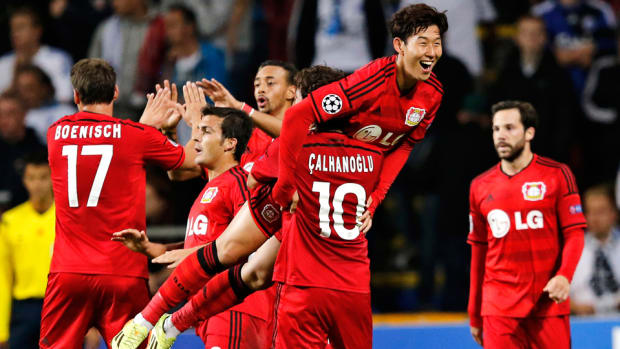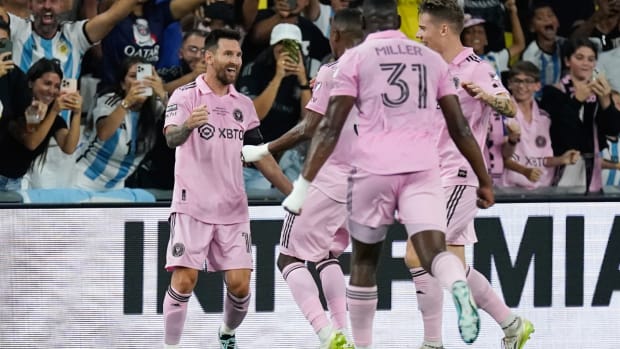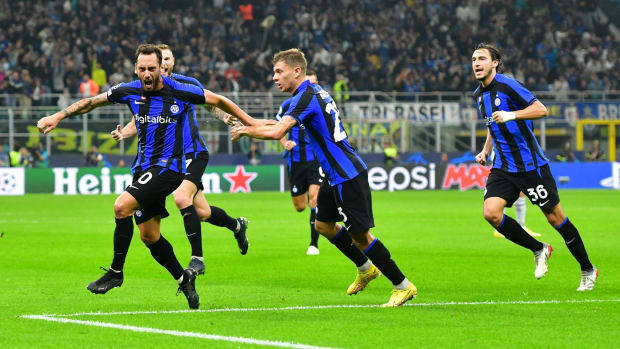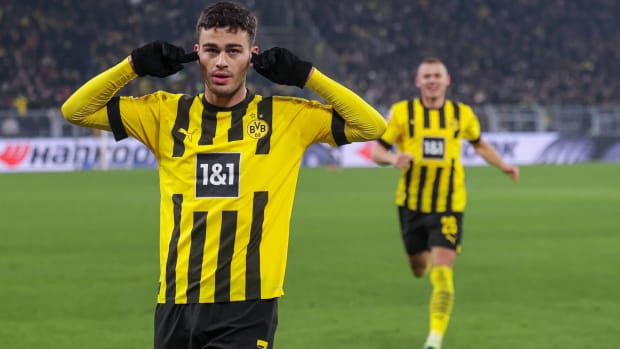National Soccer Hall of Fame Voting Remains a Grossly Flawed Process
The National Baseball Hall of Fame and Museum elected its first class in 1936, but it wasn’t until this January–83 years later—that someone (New York Yankees pitcher Mariano Rivera) was voted in unanimously.
That means there were voters who believed the likes of Mickey Mantle and Willie Mays, among others (that’s enough baseball names for a soccer column), weren’t worthy of enshrinement. It takes all kinds. Different strokes for different folks, etc. There are people who think the Earth is flat. Consensus is nearly always elusive.
That’s especially the case in American soccer, where there’s next to no clarity and everything’s an argument.
The usual measure of outrage was limited somewhat by the holiday weekend, but most of it seemed to coalesce around Abby Wambach. The retired forward, who’s the all-time leading goal scorer in U.S. women’s national team history, was elected to the National Soccer Hall of Fame with 80.9% of the vote, it was announced. Only 66.7% of the ballots cast by other Hall of Famers, media, former and current national team coaches, and MLS and NWSL managers and club officials, are required for induction. So technically, Wambach cleared the bar easily.
But it still didn’t look right. The angst was about the percentage. A NSHOF ballot permits the voter to choose up to 10 players for induction. How is it possible that 19% of the voting Hall of Famers, journalists, national team coaches, and MLS and NWSL folks, found 10 players more deserving than a 14-year pro who was the most prolific scorer in the history of international play?
It’s a sign of how fractured the voting bloc—and by extension, American soccer—really is. Some may not pay attention to the women’s game. Others clearly ignore MLS. Nobody has time to watch everything. Some may not be interested in watching anything. It’s not like other sports, where we can compare rushing yards, Stanley Cups or ERA across a consistently finite pool of players. NSHOF voters must weigh men’s and women’s soccer, club and national team soccer, domestic and foreign performances and more, against undefined, evolving and personally arbitrary standards.
How does an MLS goal compare to a Bundesliga goal? How much does club career even matter? Does an inductee have to be American? How many caps does one need to be a national team legend? Get 100, and you’re in elite company among the U.S. men. Only 17 have achieved that milestone. So many women have done it, however, that the 2019 team media guide stops listing the all-time leaders at 33 players and 106 caps.
Because there’s no agreement on any of this, the voting gears no longer turn. The small problem is that Wambach received only 80.9% of the vote. The big problem is that she was the only player elected. This year, you literally had to be the leading international scorer in the history of the sport to get into the Hall of Fame. It’s a closet of fame. A drawer. That’s absurd, and it’s a disservice to the story of American soccer, not to mention the lovely new museum that’s supposed to share that story. It just opened at FC Dallas’s Toyota Stadium, and it could probably use some inductees who played during the lifespan of the guests it’s hoping to attract.
Only two non-veteran players, Brad Friedel and Tiffeny Milbrett, were elected in 2018 (the NSHOF has a separate voting procedure for “veteran” players who retired more than 10 years ago). Just one, Briana Scurry, made it in 2017. That’s four in three years. There’s a glitch.
It’s an embarrassment that Steve Cherundolo (51.7%) and Carlos Bocanegra (an agonizing 64.6%), who distinguished themselves for years as stalwart international defenders and who carried the flag with distinction at clubs in Europe, have failed to make the cut. It’s inexplicable. And it’s a massive slight to the growth of the domestic pro game that Jaime Moreno, the best player in MLS for the first decade-plus of its existence, can’t even crack 40% of the vote.
At least it sounds like there’s a realization that the system isn’t working. Former U.S. Soccer president and 2019 builder inductee Sunil Gulati (who in contrast to the likes of Moreno and Cherundolo is getting in too quickly), told reporters, “On the player side, I think you’ll see more people get in in the next few years, and maybe the voting procedure needs to be tweaked a little bit. … The problem with more players not getting in is, in the following years when you’ve got Landon and Clint and whoever on the women’s side, that makes it harder, and you end up waiting a long time.”
Gulati seems pretty confident that voters will do right by Donovan and Dempsey when their three-year waits are up. But who knows, based on current trends? Too many slam dunks are being missed, and other candidacies aren’t being afforded the debates they deserve.
Here are a few things that need to happen to make the NSHOF worthy of the three-dimensional space it now occupies, and to ensure it meets the mission of preserving the history of American soccer:
The voting process needs to be more streamlined and transparent. Even the voters don’t know how it works. While U.S. Soccer made more of an effort this year to increase turnout, it’s still unclear to the public (and other voters) who cast a ballot. Post a list of the MLS/NWSL officials and media members who vote. Encourage voters to make their selections public, or conduct an internal vote on whether everybody’s should be published.
There were 44 players on the ballot this year. That might be too many. The thresholds (caps or number of domestic professional seasons played, etc.), probably should be raised or reconsidered. And that’s said with all due respect to the likes of Donovan Ricketts, Kenny Cooper and Stephanie Cox.
Secondly, the powers that be must make a concerted effort to promote the idea that one doesn’t have to be American to be in the National Soccer Hall of Fame. The induction of NASL legends like Pelé, Franz Beckenbauer, Giorgio Chinaglia and Carlos Alberto casts an even brighter and more distressing spotlight on the fact that not a single foreign-born MLS player has made the cut. Men such as Moreno, Carlos Valderrama and Carlos Ruiz had as much influence on the growth of MLS as their native teammates and rivals, and they’re a big part of the American soccer story.
There’s no MLS hall of fame, and any possibility one might emerge ended when FC Dallas agreed to house the NSHOF. And so Moreno has to buy a ticket to get in because he didn’t star for the U.S. national team. Unless something changes, the same fate will befall Dwayne De Rosario, Ozzie Alonso, Bradley Wright-Phillips and Diego Valeri.
Thirdly, a reimagining of the categories (player, veteran and builder) might be in order. Perhaps there should be a separate list for foreign-born pros (as the NWSL’s roots deepen, this will matter for the women as well), with the list of voters or election threshold tailored to ensure they’re getting a fair shake. Separating players and builders so definitively also may not make as much sense going forward (a much smaller subset of the voting pool selects builders).
Domestic pro performance has been devalued so much that none of the retired players among the top 10 in career MLS regular season goals has been voted into the NSHOF. One would hope Donovan breaks that duck, although its unclear whether he’s even considered retired at this point thanks to his recently-concluded indoor campaign with the San Diego Sockers. But as of now, with Jeff Cunningham, Ante Razov, Jason Kreis and Taylor Twellman all rejected, it’s clear most voters don’t care what a player does away from the national team (which still doesn’t explain the Cherundolo and Bocanegra problem). It’s also a sign that new career scoring leader Chris Wondolowski, arguably one of the great stories in modern American sports, may not have a spot in the museum that’s supposed to tell American soccer’s.
One way to help boost the candidacy of those MLS stars would be to find a way to blend the builder and player categories, because by now, many of them have done more than just kick a ball. Twellman’s (27%) work as a TV analyst and in concussion activism has helped build and improve the sport. Kreis helped craft an unlikely powerhouse at Real Salt Lake. Ben Olsen, who received 23% of the vote, is the finest example of a long-term, one-club icon and ambassador in MLS history. Gregg Berhalter (24.2%), has the chance to add to his playing career as national team coach. Tony Sanneh (20.2%) has won awards for his volunteer and community work. David Beckham (42.1%) should be eligible in this way as well. As a player, he helped the LA Galaxy win two MLS Cups, but his arrival opened the door to a new era in MLS. And if he can get Inter Miami off the ground, he may help propel the league forward once again.
Something has to change. Because now, the museum constructed to honor and celebrate the best of American soccer risks silencing the very story it’s supposed to tell.





